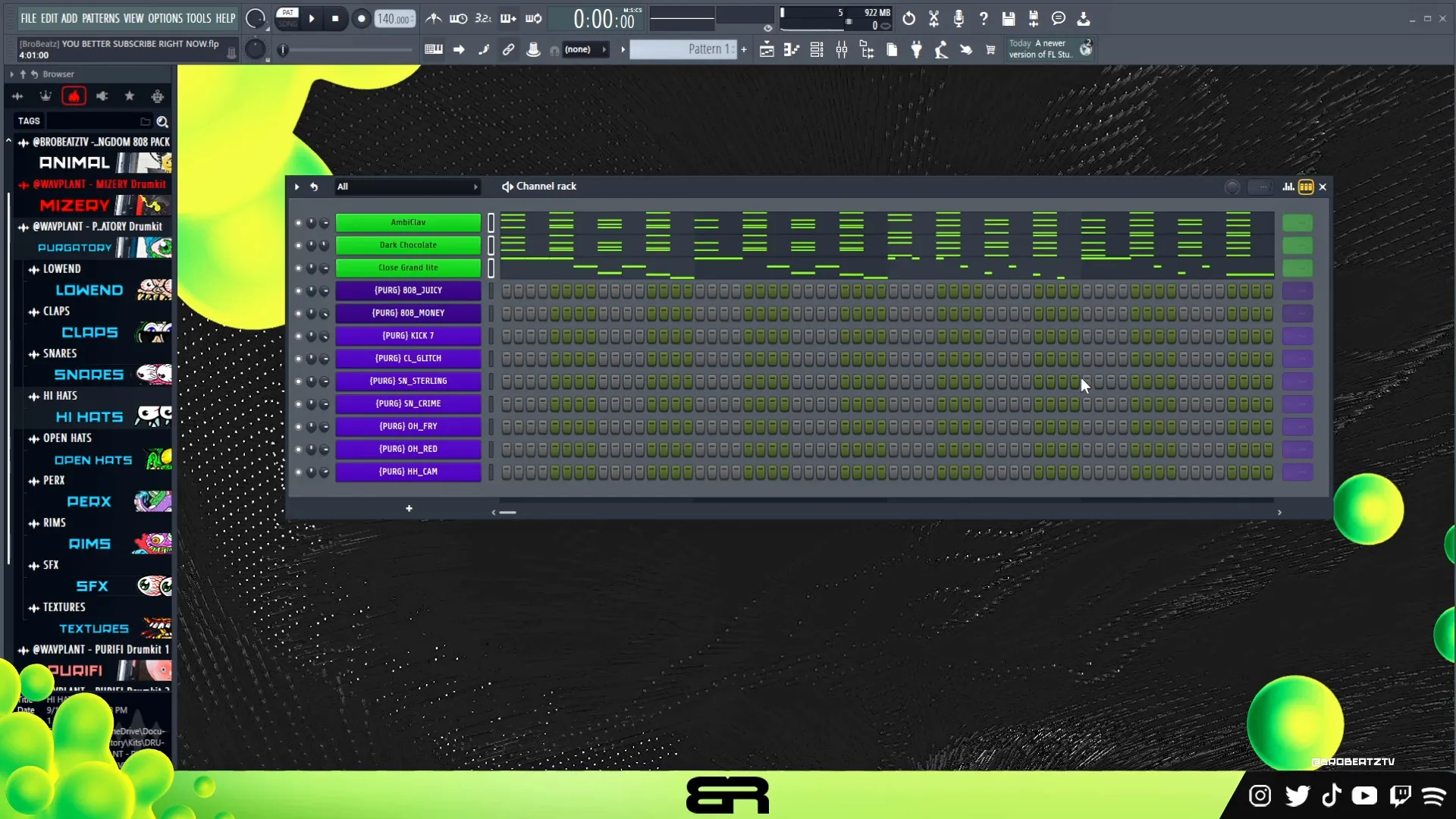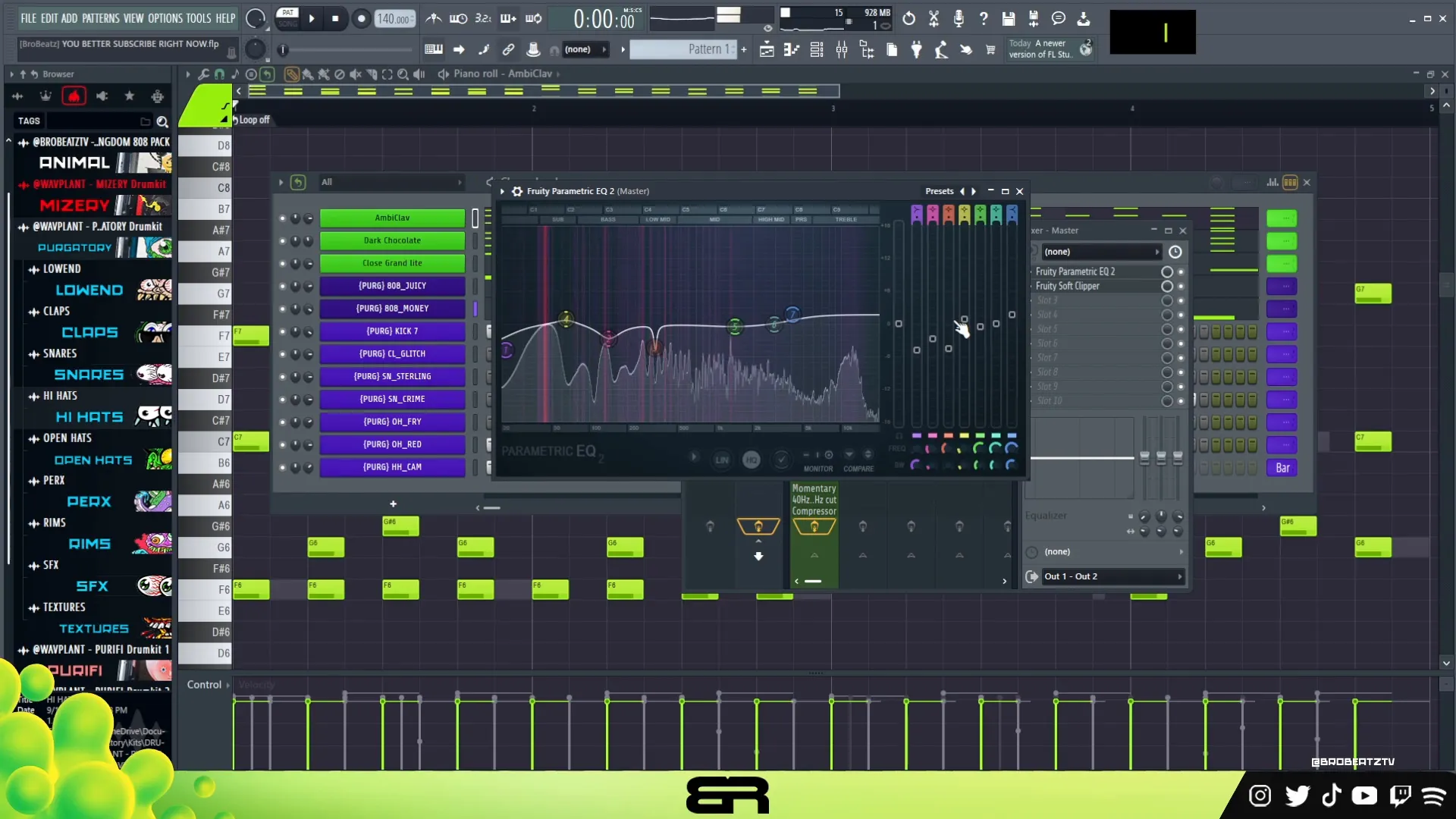Are you eager to learn how to make hard beats, but feel overwhelmed by the process? Fear not! This guide will walk you through creating hard-hitting beats with no prior music experience necessary. Let’s dive in and unlock your potential as a beat maker!
Table of Contents
- Introduction to Beat Making
- Adding Low End with 808s
- Layering Drums for Impact
- Finalizing Your Beat
- Mixing and Mastering Basics
- FAQs About Making Hard Beats
Introduction to Beat Making
Beat making is an exciting creative process that allows you to express yourself through music. Whether you want to produce hip-hop, trap, or any genre that relies on strong rhythmic foundations, understanding the basics of beat making is essential. In this section, we’ll explore the fundamental concepts that will help you start your journey as a beat maker.
Video BroBeatzTV Source
At its core, beat making involves layering sounds to create a cohesive track. This includes drums, melodies, and various effects that enhance the overall sound. The goal is to create hard-hitting beats that resonate with listeners. As you progress, you'll find your unique style, but mastering the basics is crucial for any aspiring producer.
Setting the Right Tempo
Choosing the right tempo is vital in beat making. It sets the mood and energy level of your track. Generally, hip-hop beats range from 70 to 100 BPM, while trap beats often fall between 130 to 160 BPM. For our example, we’ll stick with a tempo of 140 BPM, which strikes a perfect balance between energy and groove.

Organizing Your Workspace
Before diving into beat creation, it’s essential to have an organized workspace. A clean and tidy setup not only boosts productivity but also enhances creativity. Start by categorizing your sounds and instruments. Use colors to differentiate between melodies, drums, and other elements.
For instance, you might colour your melody tracks green, your bass elements purple, and your drums a darker shade. This visual organization helps you navigate your project more efficiently and keeps your focus on creating hard beats.

Creating Your Melody
Now that your workspace is organized, it’s time to create your melody. A simple yet effective approach is to use a template that you can replicate across your projects. Start by selecting a light sound preset. Using a synth or piano sound can work wonders for this initial step.
For your melody, choose a starting note, copy it, and then move up seven notes. This creates a fifth interval, which is fundamental in many music styles. From there, you can add additional notes to create a suspended second chord. This simple formula will give you a great foundation for your melody.

Enhancing the Melody with Additional Instruments
To make your melody sound fuller, consider layering it with additional instruments. Start by copying your initial melody and applying different sound presets. For instance, you can use a darker synth or a piano to add depth to your track. This layering technique enriches the sound and makes it more engaging.

Remember, the goal is to maintain your unique touch while enhancing the overall vibe of the melody. Don’t be afraid to experiment with different sounds and effects to find what resonates best with you.

Applying Effects to Your Melody
Once your melody and layers are in place, it’s time to apply effects. Effects can transform a simple melody into something dynamic and exciting. Start with a chorus effect to widen the sound, followed by a pitch shifter to add some character. Experiment with different settings until you find a combination that works.
WEBSITE RESOURCES FOR MUSICIANS
Additionally, using tools like EQ and compression can help you refine your sounds. EQ allows you to cut unnecessary frequencies, making space for your drums. Compression will help balance the dynamics of your melody, ensuring it sits well in the mix.

Adding Low End with 808s
To make hard beats, the low end is crucial. One of the best ways to achieve this is by using 808s. The 808 kick drum is renowned for its deep, resonant sound that can provide the necessary punch to your track.
Start by selecting a couple of 808 samples. Using multiple 808s adds texture and complexity to your low end. For our beat, we’ll use two different 808 sounds to create a richer foundation. Place the first 808 on the downbeats to establish a solid rhythm.

Creating a Pattern
Once your 808s are selected, it’s time to create a pattern. Begin by programming a simple rhythm. You can follow a basic kick pattern, but feel free to add variations as you see fit. For instance, you might want to add a couple of off-beat hits to create a groove.
After laying down the initial pattern, copy it to ensure both 808s play in sync. However, remember to delete the first note of the second 808 to prevent overlapping, which can muddy the sound. Adjust the volume levels of each 808 to find a balance that works well in the mix.

Layering Drums for Impact
Drums are the backbone of any hard-hitting beat. Layering your drums can significantly enhance the overall impact of your track. Start by introducing a clap or snare on the backbeat. This will provide a solid structure for your rhythm.
When layering, consider the velocity of each hit. By slightly varying the velocity, you can create a more dynamic and natural sound. For instance, if you have a clap, make some hits louder and others softer to give it a human feel.

Kick and Hi-Hat Patterns
Next, it’s time to add the kick and hi-hats. For the kick, create a pattern that complements your 808s while avoiding repetition. This keeps your beat interesting and engaging. A good technique is to alternate between double kicks and single hits.
For the hi-hats, use a consistent pattern that includes rapid 16th notes. You might want to add some rolls or triplets to spice things up. Remember, the key to layering drums effectively is to maintain a balance between all elements, ensuring each sound is heard clearly.

Finalizing Your Beat
Once you have your main elements in place, it’s time to finalize your beat. This involves ensuring all components are working harmoniously together. Play your beat multiple times, tweaking levels and adjusting sounds until it feels right.
Consider adding transitions or fills to make the beat more dynamic. This could involve adding a snare roll before a drop or a crash cymbal to signal a significant change in the beat. These little touches can elevate your track significantly.

Mixing and Mastering Basics
Mixing and mastering are essential for making your hard beats sound professional. Start by balancing the levels of each element. Ensure that your kick and bass are prominent without overpowering the other sounds. Use equalization (EQ) to cut frequencies that clash, allowing each sound to shine.
Compression can also help in creating a cohesive sound. It ensures that no sound is too loud or too soft in relation to the others. After mixing, you can move on to mastering, which involves finalizing the track's overall sound and preparing it for distribution.

FAQs About Making Hard Beats
What software do I need to start making beats?
You can use any Digital Audio Workstation (DAW) like FL Studio, Ableton Live, or Logic Pro. Each has its features, so choose one that suits your workflow.
Do I need music theory knowledge to make hard beats?
No, while knowledge of music theory can help, it’s not essential. There are many tutorials and templates available that can guide you through the process without needing a deep understanding of theory.
How can I make my beats stand out?
Experimentation is key. Try different sounds, effects, and patterns. Layering different instruments and using unique samples can also help your beats stand out from the crowd.
Can I use free samples for my beats?
Yes, there are numerous websites where you can find free samples. Just ensure that you check the licensing agreements to avoid copyright issues.
How long does it take to get good at beat making?
Like any skill, practice is essential. With consistent practice, you can start making decent beats within a few weeks, but mastering the craft can take months or years.



